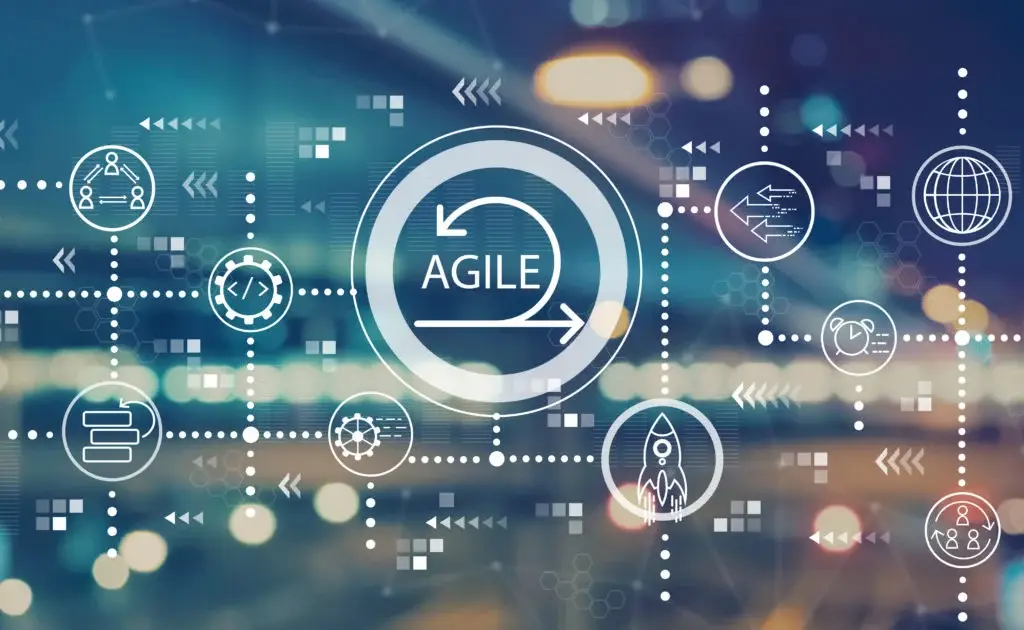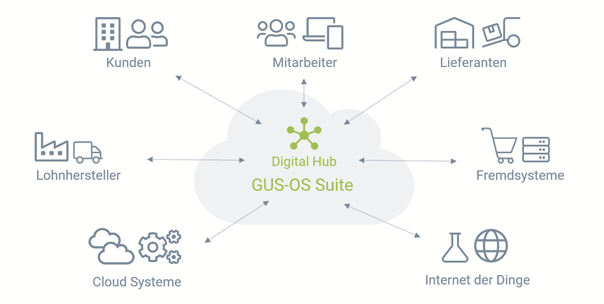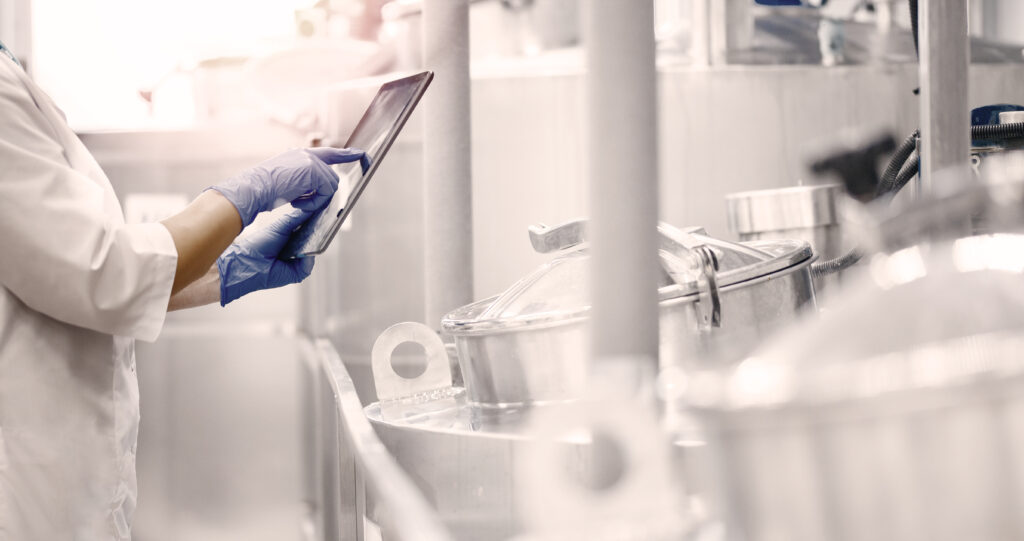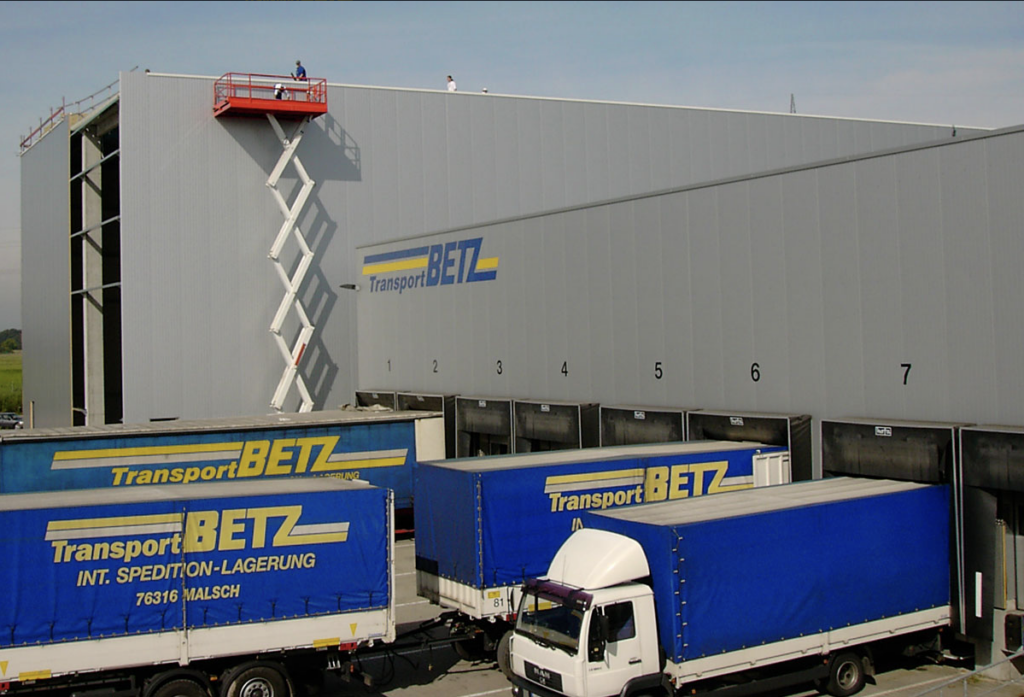The ERP system as a success factor for resilience.

Authors:
Taner Memet Ali - Head of Solution Architecture, GUS ERP GmbH.
Olaf Buck - Head of New Customer Projects, GUS ERP GmbH.
When restaurants and commercial kitchens suddenly cease to be customers, as has happened recently, this does not automatically mean a drop in production and loss of sales for food manufacturers. Sales often just shift - to the home kitchen, for example. The more resilient a company is, the more flexibly it can deal with such rapid changes in direction. And resilience in turn comes from largely digitalized processes and a high level of data integrity.
One example is cheese: it finds its way onto plates even when restaurants and canteens are closed, mainly by taking the supermarket route. Or it ends up in so-called "food boxes", which have become increasingly popular during the COVID pandemic. However, for food manufacturers, in this case cheese dairies, such a shift means more than just different addressees with different delivery addresses. In some cases, the packaging has to be completely changed. Sometimes completely different products and recipes are also required, as the needs of amateur chefs at home are usually very different to those of commercial kitchens.
Abrupt change in sales and products
The abrupt switch from wholesale to retail or end customers on the one hand and the sometimes necessary reconfiguration of products on the other posed fundamental questions for food producers during the pandemic: Is the company even in a position to produce the newly desired products and at what cost? How quickly can the changeover take place and with which (new) partners? How will this change the supply chain?
It is now commonplace that the more digitalized a company is and the more integrated its digital systems and processes are, the faster and more agile companies can deal with such sudden changes of course. But what does this mean for individual food producers in concrete terms? For them, the respective ERP system has recently become increasingly central, as it can serve as a kind of hub for the data relevant to such planning - also as a link between production and downstream processes such as logistics or sales. For example, it makes it possible to operate with parts lists and recipes and compares product development with procurement and supply sources or stock levels and available raw materials.
Online stores on the rise
The direct connection of food producers to store systems or online platforms on which they can market their products in direct sales is currently a major topic and one that is booming even more due to the pandemic. How can this connectivity be achieved at the touch of a button or with just a few configurations?
The real challenge here is not the mere technical connection to such platforms. Rather, the provider company's ERP system must have all the essential information and be able to display it in a linked format. This includes, for example, parts lists, recipes, replenishment times in the form of lead times in purchasing, production, warehousing, quality control, internal transportation or the delivery times of potentially available suppliers. Some of this data comes from internal systems, but some also comes from external sources. These can be very simple things such as a Google Maps route for deliveries.
Accordingly, the respective ERP system must have so-called "gatekeepers" or "connectors", which usually integrate external information sources via suitable interfaces (e.g. REST APIs). In some cases, these are also other connectivity standards that have become established on both the purchasing and sales side, such as EDIFACT. Such standard interfaces are currently rapidly gaining in importance.
ERP connection to external systems
The ERP solution GUS OS-Suite, for example, implements such connections via the GUS-OS Digital Hub Service. This is a cloud-based service that makes the processes of the ERP solution accessible outside the company via REST interfaces in order to integrate suppliers, mobile employees and even machines and IT systems into the company's own ERP environment. No master or transaction data is lost and no sensitive data is stored in the cloud. This is because only those parts and functions of the ERP system that are necessary for communication are opened up to the outside world. Furthermore, all communication is encrypted.
However, the reality is often different: There are still numerous media disruptions, particularly between the individual departments in the company, for example between production, laboratory and quality assurance. In some cases, the data flow is still paper-based. ERP systems are able to act as an integrator and driver of digitalization and establish comprehensive process control that integrates this "on-foot information" into the system.
This is why most common ERP systems on the market now offer central control stations, "dashboards" or "cockpits", which collect and aggregate all data and visualize it for the respective roles and responsibilities in the company. From this condensed display, users can then drill down to the detailed data and information they need.
Process orientation as the key
What many solutions lack, however, is a link between the roles and responsibilities displayed in the ERP control center, in short: the process view. However, only those who take a process-oriented approach instead of a purely document-oriented one are able to change production and sales processes quickly and flexibly. This is because processes and their interaction must be adapted across departments.
This is only possible if those responsible in the company no longer think in terms of individual functions or departments, but rather in terms of interrelated company processes. Last but not least, it is essential that the respective ERP system maps the industry-specific features of the process and food industry, for example industry-specific authorization matrices or compliance rules. All of this subsequently improves the integrity and usability of the data.
Quality management increasingly important
(External) inspectors and auditors have also increasingly focused on data integrity in recent years. As a result, the number of so-called "findings" has risen. As a result, the number of warnings issued by companies has recently tripled to quadrupled. For this reason, they have recently invested more in quality management - on the one hand in specialist systems tailored to this purpose, but also in connecting them to their respective ERP systems, where all key data converges.
For example, if a food producer is affected by IFS regulations (IFS, International Featured Standards) to an above-average extent, it must have sufficient laboratory staff available. They must be trained if something changes in the QM processes. At the same time, they must be able to recognize anomalies and then assign them to CAPA measures (CAPA, Corrective Actions, Preventive Actions). Such anomalies include, for example, OOS (out of specification) results, batch-related deviations or complaints. This assignment requires a structured and centralized database, which can be provided first and foremost by the respective ERP system.
Integer data, transparent processes
Data integrity and process-oriented thinking and action are extremely important for resilient and reliable production today. This is currently illustrated by the coronavirus crisis with its sometimes significant changes in purchasing behavior. The Belgian cheese dairy Kaas, for example, has reacted quickly: Kaas collects the cheese selected by customers from the producers on request, cuts it into flat pieces suitable for letterboxes, vacuum packs it and labels it. This makes it easy for the letter carrier to deliver directly to the letterbox, as the cheese packaging corresponds to the standard dimensions of the postal delivery. Food producers who want to set such trends quickly need a smooth exchange of data and a high level of process transparency. This is the only way to not only precisely calculate delivery dates within a short space of time, but also to meet them. This ensures the ability to act, even if markets, products, sales channels and supply chains change again.
Resilience in the process industry - the top 5 success factors
1) Process orientation: workflow control with multi-stage approval processes and their documentation
2) End-to-end transparency: from the individual machine to the profit and loss account in order to be able to plan and simulate changes holistically
3) Integrated QM: Linking of all quality-relevant processes such as supplier evaluations, laboratory tests, procurement and production processes
4) Cost control: through fully integrated financial accounting audited in accordance with GoB/GoBs/GDPdU and certified in accordance with IDW880, including asset accounting and liquidity planning, so that all costs are immediately available - from contribution margin and batch costing to flexible cost accounting
5) Future-proof technologies: through continuous further development of the solutions, for example with regard to IoT, AI or the secure and flexible connection of business partners, sales platforms, etc.

Illustration: The Digital Hub of the GUS-OS Suite connects the ERP system with external platforms


